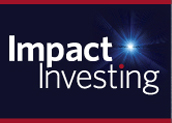The company says it completes rigorous due diligence on issuers before deciding to work with them. Factors it examines include their mission, experience and track record in microfinance. It also looks at an issuer's financial health, staffing, business strategy, risk management policies, portfolio management policies, compliance processes, operations, and methodology for selecting which microfinance projects will receive loans.
MicroPlace currently works with five non-profit issuers: Oikocredit USA, FINCA International (the group's official name, which stands for Foundation for International Community Assistance), Working Capital for Community Needs (WCCN), Shared Interest and the Calvert Foundation. WCCN focuses on Latin America and Shared Interest focuses on South Africa, while the other issuers sport a broader focus.
Domestic Help
Although many investments offered through the MicroPlace platform are geared towards helping disadvantaged communities overseas, the company is expanding its domestic offerings this fall in response to investor demand, says Stevens.
One domestic option is the California Freshworks Fund, accessible through Calvert Foundation Community Investment Notes to residents of most states. The public-private partnership loan fund supports healthy food access in low-income California communities by financing grocery stores and other forms of healthy food distribution. It pays 1% annual interest and matures on June 15, 2014.
Stevens says MicroPlace has never had an issuer fail to make a payment on interest or principal, although he cautions that past performance doesn't guarantee future results. MicroPlace encourages investors to read investment prospectuses and provides links on its Web site.
Jennifer Lazarus of Lazarus Financial Planning, a fee-only advisory practice for socially responsible investors in Durham, N.C., describes MicroPlace's issuers as "solid" and is comfortable introducing clients to the platform for their cash and philanthropy needs. She says about 10% of her current clients have approximately 10% of their money invested there today.
"Everyone needs an emergency fund and it's very easy to park your cash in a community development financial institution," she says. Some of her clients have built what she calls certificate of deposit ladders at MicroPlace, with a string of investments maturing about a year apart.
Lazarus sees MicroPlace as a good way for investors to slowly build their philanthropic sleeve, and she thinks it can be easier for people to be more generous with their money when they're lending it out and it keeps working for them.
She also likes that MicroPlace offers the smaller investor a wide selection of investment options at lower denominations and puts them all on one electronic statement.
Lazarus says some clients have told her, "Wow, this is so cool. I didn't know anything like that existed." She says she has personally used the platform to invest in a number of countries where she feels a connection, including Indonesia and Brazil--places where she spent part of her childhood. She also thinks selecting MicroPlace investments would be fun for parents to do with their children.

